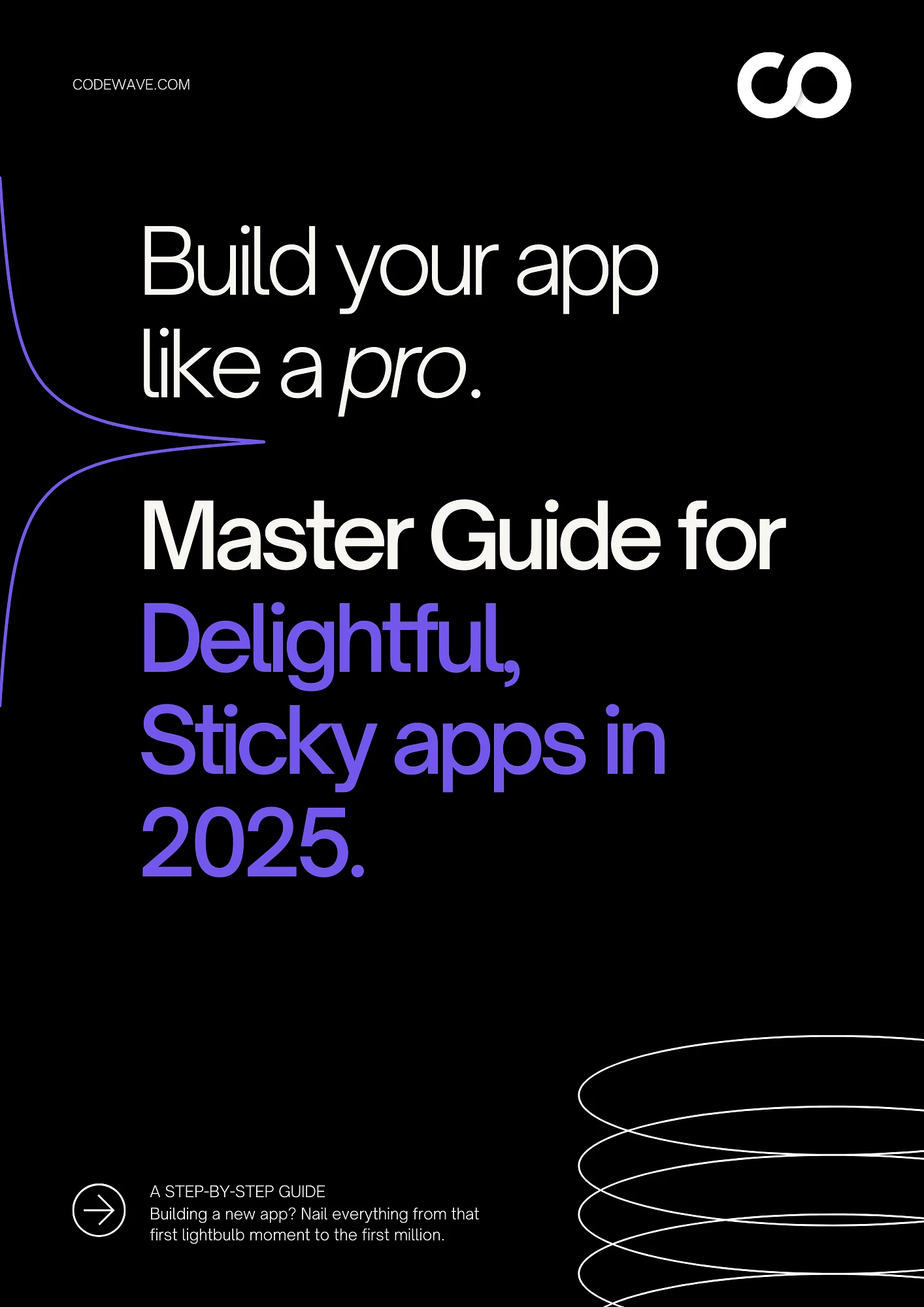When was the last time you used your own website? Not just checked if it was working, but really used it the way a potential client would. Most of us don’t do this often enough. But your customers do it every day. Every interaction shapes how they perceive your business.
In fact, Forrester found that improving a customer experience index by just one point can add over $1 billion in revenue for large businesses. Customer experience design helps you understand these interactions better. It’s about making each touchpoint feel intuitive rather than frustrating. Your site should answer questions before they’re asked and guide without pushing.
The challenge is knowing where to start. What truly moves the needle when you’re designing for customer experience?
What are the practical benefits you should expect? And more importantly, what steps can you take to get there without overhauling everything at once? These are the questions worth exploring.
Key Takeaways:
- Customer experience design directly impacts your bottom line. Better site usability means higher conversions with the same traffic you already have.
- Start by watching how people actually use your site, not how you think they do. Real user behavior reveals problems worth fixing first.
- Customer experience design is an ongoing process, driven by data, that constantly improves as you learn from user behavior.
- Small improvements compound over time. You don’t need a complete rebuild. Fix high-friction points systematically and measure what changes.
- Good CX isn’t about following trends. It’s about removing obstacles between your customers and what they’re trying to accomplish on your site.
What is CX (Customer Experience) in Web Design?
Customer experience in web design is how someone feels during their entire journey on your website. It’s not just about whether your site looks good. It’s about whether it actually works for the people using it.
Think of it this way. A potential client lands on your homepage looking for pricing information. CX design considers every step of that journey. Can they find the pricing page in two clicks, or does it take seven?
Does the page load in under three seconds, or do they wait? Is the information clear or buried in marketing speak? Each of these moments adds up to their overall experience.
Here’s a breakdown of what it means in the context of web design:
- Navigation architecture determines how quickly people find what they need. A well-structured site map means users don’t have to think about where to click next.
- Page load speed affects whether people stay or leave. Research indicates that a one-second delay can result in a 7% reduction in conversions.
- Mobile responsiveness ensures your site works across devices. Over 60% of web traffic now comes from mobile, so this isn’t optional.
- Form design impacts completion rates. Asking for ten fields when five will do costs you submissions.
- Visual hierarchy guides attention to what matters most. Size, color, and spacing tell users what to read first.
- Accessibility features, such as proper contrast ratios and keyboard navigation, ensure that everyone can use your site, not just some people.
Here’s a practical example. Say you run a consulting firm. A visitor wants to book a discovery call. Good CX design means your contact form appears on every service page, not just a dedicated contact page.
It auto-fills known information. It clearly states what happens next. It confirms submission instantly. Bad CX design makes them hunt for a generic email address, write a message from scratch, and wonder if it went through.
The difference between decoration and CX design is intent. Decoration asks if something looks appealing. CX design asks if it helps someone complete their goal. Both matter, but only one drives business outcomes.
Why CX is the New Trend in Web Design?
Calling it a trend undersells what’s actually happening. Customer experience design has become central because the market has changed. Customers changed. And frankly, what used to work doesn’t anymore.
Ten years ago, having a website at all gave you an edge. Five years ago, having a modern-looking site was enough. Today, people compare your digital experience to every other site they’ve used that week.
That includes Amazon, Netflix, and whatever fintech app they opened this morning. Your competition isn’t just other businesses in your industry. It’s every smooth, intuitive digital experience out there.
Several forces are pushing CX to the forefront:
- Attention economics got brutal. People decide whether to stay or leave your site in about 3 seconds. You’re not competing for a sale anymore. You’re competing for attention first.
- Differentiation through products alone got harder. When services and offerings look similar across competitors, experience becomes the differentiator. People remember how you made them feel more than what you sold them.
- Data made behavior visible. Tools like heatmaps and session recordings show exactly where users struggle. You can see someone click a non-clickable element twenty times before giving up. That visibility makes ignoring CX problems harder to justify.
- Mobile usage shifted expectations. When someone can order food, book travel, and manage investments from their phone, a clunky desktop-only B2B site feels outdated. The bar for “acceptable” moved up.
- SEO algorithms reward user experience. Google’s Core Web Vitals update made page speed and interactivity ranking factors. Good CX now affects whether people find you in the first place.
- Customer acquisition costs keep rising. If it costs you $500 to get someone to your site, losing them to poor UX is expensive. Optimizing conversion through better CX has a clearer ROI than buying more traffic.
What’s actually new isn’t that experience matters. It’s that we can now measure, test, and improve it systematically. CX web design has transitioned from a subjective opinion to a data-driven practice.
You can A/B test two checkout flows and know definitively which one works better. You can track where mobile users drop off and fix that specific point. This measurability makes CX design a business discipline, not just a design philosophy.
Do you find it hard to tell the difference between CX and UX in web design? Both are critical, but they address distinct aspects of the user experience. CX looks at the bigger picture, i.e, the entire journey, while UX focuses on the individual interactions.
Let’s explore how they differ and why both are essential for successful design.
CX vs. UX in Web Design: Key Differences
| Aspect | CX (Customer Experience) | UX (User Experience) |
|---|---|---|
| Focus | Overall customer journey and emotional connection. | Specific interactions between users and individual elements. |
| Scope | Covers the entire experience, from the first visit to post-purchase. | Focuses on usability and ease of interaction within the site. |
| Goal | Create a positive, lasting relationship with the customer. | Ensure smooth and intuitive interaction with the site. |
| Elements Involved | Website, customer service, product quality, brand perception. | Website layout, navigation, load times, and visual design. |
| Impact | Builds brand loyalty and trust over time. | Improves site efficiency and satisfaction during use. |
| Example | A customer feels valued after seamless communication with support. | A user can easily find and purchase a product in just a few clicks. |
Top 6 Advantages of CX in Web Design
Better customer experience doesn’t just make your site nicer to use. It changes how your business performs. These advantages show up in metrics that matter to your bottom line.
- Higher conversion rates. When people can find what they need and take action without friction, more of them do. A streamlined checkout process or simpler contact form directly increases the percentage of visitors who become customers. You’re working with the same traffic but getting better results.
- Lower bounce rates. Visitors stay longer when your site makes sense to them. Clear navigation and fast load times mean people explore multiple pages instead of leaving immediately. This matters because engagement correlates with purchase intent.
- Reduced support costs. A well-designed site answers questions before customers need to ask them. When information is easy to find and processes are intuitive, you get fewer support tickets and phone calls. Your team spends less time explaining basics and more time on complex issues.
- Stronger brand perception. How your website works shapes how people view your entire business. A smooth digital experience suggests competence and professionalism. A frustrating one raises doubts about whether you’ll be reliable in other areas. First impressions stick.
- Better mobile performance. Good CX design accounts for how people access your site. With mobile traffic dominating, sites that work seamlessly across devices capture opportunities that desktop-only experiences miss. You’re not losing half your audience to poor mobile UX.
- Competitive differentiation. When products and pricing are similar, experience becomes the tiebreaker. Customers choose businesses that make their lives easier. Investing in CX web design gives you an edge that’s harder for competitors to copy than a feature list.
The Process of Customer Experience Design
Customer experience design isn’t a one-time project. It’s a structured process that builds understanding first, then creates solutions based on what you learn.
Each step informs the next, and the cycle repeats as you gather more data about how people actually use your site.
Customer Journey Mapping
This is about documenting the path someone takes from first hearing about you to becoming a customer. You map every touchpoint, from initial search to post-purchase follow-up. The goal is to find where people get stuck or confused.
A typical journey map shows stages like awareness, consideration, decision, and retention. For each stage, you identify what customers are thinking, feeling, and trying to accomplish. You also note pain points and opportunities for improvement.
This exercise reveals gaps between what you think is happening and what really happens. Maybe you assume people read your about page before contacting you, but data shows they go straight to pricing. That changes where you put key information.
Finding Multiple Sources of Customer Information
Good CX design relies on real data, not assumptions. You need input from analytics, user testing, customer service logs, sales conversations, and direct feedback. Each source shows a different angle.
Analytics tools show behavior patterns like where people drop off or which pages get the most traffic. Heatmaps reveal where users actually click versus where you want them to click. Session recordings let you watch real people navigate your site.
Customer service tickets highlight recurring confusion. If ten people ask the same question, your site probably isn’t answering it clearly. Sales teams hear objections and concerns that should inform your messaging. Surveys and interviews add context that numbers alone can’t provide.
Building Different Customer Personas
Personas are detailed profiles of your typical customers. They’re based on real patterns in your data, not stereotypes. A good persona includes goals, frustrations, technical comfort level, and decision-making factors.
You might have a persona for the end user who’ll use your product daily and another for the executive who approves the budget. Their needs are different. One cares about features and ease of use. The other cares about ROI and implementation time.
These personas guide design decisions. When choosing between two navigation structures, consider which one better serves your primary persona. Personas keep you focused on real user needs instead of personal preferences.
Maintaining Consistent Brand Messaging
Consistency means saying the same thing in the same way across your entire site. Your homepage, service pages, and checkout flow should feel like they’re from the same company. Tone, terminology, and visual style need to align.
Inconsistency creates doubt. If your homepage emphasizes speed but your product page talks about comprehensive features, visitors wonder what you prioritize. If buttons say “Get Started” in some places and “Sign Up” in others, it feels careless.
A content style guide helps maintain this consistency. It defines your brand voice, preferred terms, and messaging hierarchy. Everyone working on the site refers to the same standards, so the experience holds together.
Focusing on Simplicity and Ease of Use
Simplicity means removing everything that doesn’t serve a clear purpose. Every element on a page should either inform a decision or enable an action. If it doesn’t do one of those things, question whether it needs to be there.
Ease of use comes from reducing cognitive load. People shouldn’t have to think hard about how your site works. Navigation should be obvious. Forms should be short. Calls to action should be clear. The path from landing to conversion should feel natural.
This doesn’t mean stripping out personality or making everything generic. It means being deliberate about complexity. Add depth where it matters and keep everything else straightforward. Test with real users to find where they struggle, then simplify those areas.
Need us to help map your customer journey, gather the right data sources, build personas, and deliver a web design that aligns with the experience you want to provide?
At Codewave, our web designers can do the full process and turn the findings into a high‑impact, user‑centric design that drives results.
Start your journey towards a customer-centric website. Reach out to our team now.
CX Web Design Best Practices in 2025
These practices reflect what works based on current user behavior and technology. They’re not theoretical ideals. They’re approaches that consistently improve performance across different types of sites.
- Prioritize Function Over Form: Start by designing for smaller screens and then scale up to larger ones. This mobile-first approach forces you to focus on the most important features and core functionality. When space is limited, what matters most becomes clear.Also, keep page load time under three seconds by compressing images, minimizing code, and using efficient hosting. Speed directly impacts user experience, SEO rankings, and conversion rates
- Use clear, specific calls to action: Generic buttons like “Submit” or “Learn More” don’t tell people what happens next. Be specific: “Download the Guide” or “Schedule a Call.” People are more likely to click when they know the outcome.
- Reduce form fields to essentials: Only ask for information you need right now. You can gather additional details later. Every field you remove increases completion rates. Start with name and email, then build from there.
- Implement accessible design standards: Use sufficient color contrast, provide text alternatives for images, and ensure keyboard navigation works. Accessibility helps everyone, not just people with disabilities. It makes your site more usable across different contexts and devices.
- Show real social proof: Specific testimonials with names and companies work better than generic praise. Case studies with concrete results build credibility. Logos of recognizable clients signal trustworthiness. Just make sure it’s all authentic.
- Create an obvious visual hierarchy: Use size, color, and spacing to guide attention. The most important information should be the most prominent. People scan pages in predictable patterns. Design with those patterns in mind.
- Make navigation predictable: Put menus where people expect them. Use standard terminology. Don’t try to reinvent basic web conventions. Innovation is good, but not for fundamental navigation that people use on autopilot.
- Test with real users regularly: Watch people use your site and note where they hesitate or make mistakes. Five user tests will reveal most major usability issues. You don’t need huge sample sizes to find problems.
- Provide clear error messages: When something goes wrong, tell people exactly what happened and how to fix it. “Invalid entry” doesn’t help. “Email address must include @” does. Good error handling reduces frustration and keeps people moving forward.
Conclusion
Your website’s customer experience shapes business outcomes every day. Better experiences lead to higher conversions, stronger brand perception, and lower acquisition costs.
The good news is that meaningful improvements don’t require a complete overhaul. You can start with high-impact changes based on user data and build momentum from there. Focus on removing friction at key conversion points.
Codewave has helped businesses across fintech, healthcare, education, and several other industries translate CX principles into working solutions. Our 400+ projects have taught us that great user experiences need both solid technical foundations and genuine user insight.
Our design-thinking process fast-tracks results by frontloading user research. We identify real pain points through interviews, testing, and behavioral analysis before writing a line of code.
This means development time goes toward solving actual problems, not building features that sound good in theory. We prototype rapidly, gather feedback, and iterate until the experience works. Then we build it properly with clean code and solid architecture
Ready to see what’s possible for your site? Schedule a 15-minute free strategy session with us today.
FAQs
1. What is CX web design?
CX web design focuses on how people feel and interact with your website throughout their entire journey. It goes beyond aesthetics to ensure your site actually works for users: fast load times, intuitive navigation, and clear paths to conversion. The goal is to remove friction so people can accomplish what they came to do.
2. How is CX web design different from regular web design?
Regular web design often prioritizes visual appeal and brand expression. CX web design prioritizes user behavior and business outcomes. It uses data like heatmaps, session recordings, and user testing to make decisions. Every design choice is evaluated by whether it helps users complete their goals, not just whether it looks good.
3. How much does CX web design cost?
Costs vary based on your site’s complexity and current state. Minor CX improvements like form optimization or navigation restructuring might cost a few thousand dollars. Complete redesigns with extensive user research and testing can run significantly higher. The key is prioritizing changes based on potential impact, so you can start small and scale investment as you see results.
4. How long does it take to see results from CX web design improvements?
Some changes show immediate impact. Faster load times or simplified checkout flows can improve conversion rates within days. Deeper improvements like navigation restructuring or mobile optimization might take weeks to show full results. The timeline depends on your traffic volume. More visitors mean faster data collection and clearer patterns.
5. Can CX web design help with SEO?
Yes. Google’s algorithms reward user experience factors like page speed, mobile responsiveness, and time on site. When people engage longer and bounce less because your CX is better, search engines interpret that as quality. Good CX web design improves both user satisfaction and search visibility simultaneously.
Codewave is a UX first design thinking & digital transformation services company, designing & engineering innovative mobile apps, cloud, & edge solutions.







